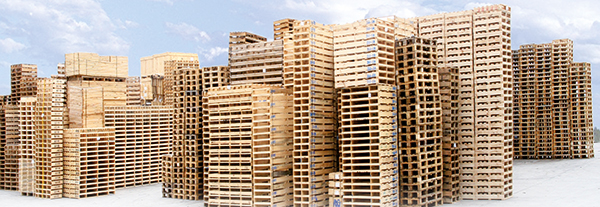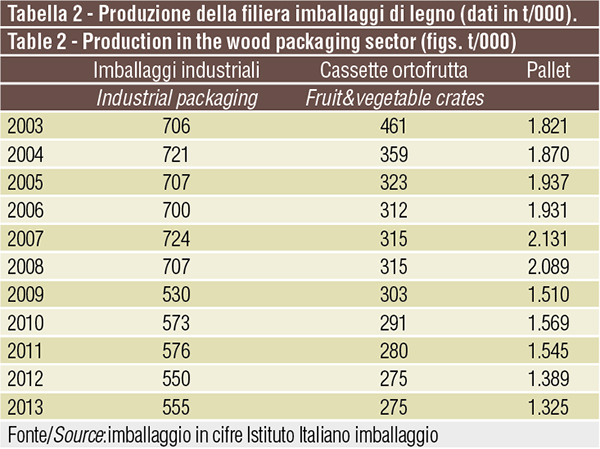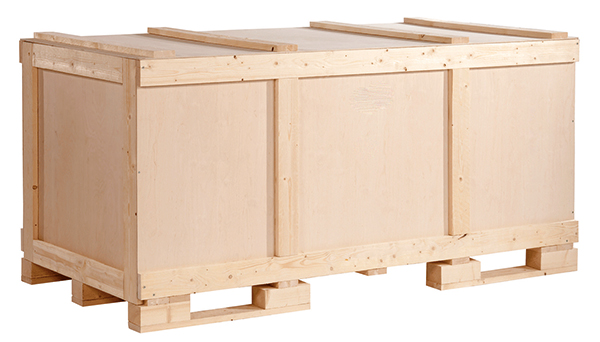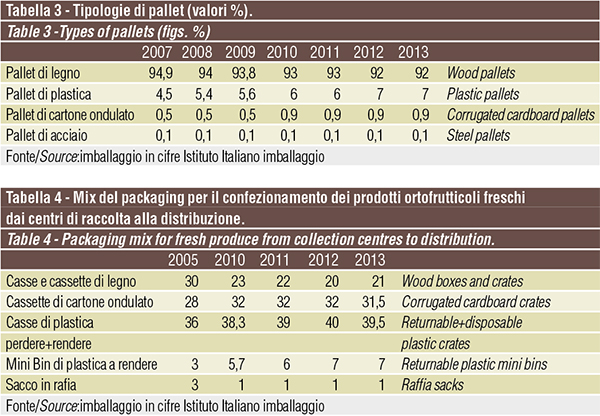Wood packaging – Data 2013
In 2013 Italy witnessed the circulation of 2 million and 456 thousand tons of wood packaging used in the handling of goods in different manufacturing sectors.

In Italy manufacturers of wood packaging are approximately 2,057, with an estimated number of employees at 10,200. In calculating the total, 13% of companies specialize in the manufacture of boxes and crates for fruit and vegetables, around 47% manufacture pallets and 40% are manufacturers of industrial packaging.
The sector also includes suppliers of basic materials for packaging and importers of empty packaging, and along with pallet producers we also find pallet repairers.
67% of sector players are stationed in Northern Italy, 13.5% in the Centre and 19.5% in Southern Italy (including Sardinia and Sicily).
As noted in the journal “Recycling and recovery,” in 2013 a total of 2 million and 456 thousand tons of wood containers circulated nationwide (this figure includes new packaging and pallets that have been used, repaired and put back into circulation).
In particular, in relation to the total put into circulation in Italy, 67% is attributable to new or reconditioned pallets, 21% to industrial packaging, 8% to packaging for fruit&vegetables and the remaining 2% comprises wine boxes, staves and corks.

Sector figures
The continuing economic crisis that has affected the entire European Union has also had a negative impact on the packaging industry, and the wood packaging segment is no exception.
Global production stands at the 2,155 /000 (-2.7% compared to 2012) and also the foreign trade registered a decline of 1.6%, while imports showed a slight increase (0.7% ). Apparent consumption is estimated to be down 2.3%.

Industrial packaging
In the context of wood packaging in general, industrial packaging occupies a special place: their peculiar characteristic depends on the predisposition of the operators to manage the service for the allocation of products in ad hoc designed containers.
The main segment of industrial packaging (about 80%) is constituted by crates and, in particular, by wooden structures built to measure and used for the transportation of machinery or parts of the same.
The remaining 20% involves staves, liquor boxes and spools for cables.
The overall production in 2013 reached 555 t/000, a slight increase over the previous year.
Trade with abroad is limited to liquor crates and corks.
70-75% of the supply is attributable to specialized companies that work for multiple customers; the remaining 30-25% is accounted for by self production or firms that work exclusively for a single customer.

Pallets
Transport packaging par excellence, the pallet is widely distributed throughout the various sectors.
In relation to the material they are made out of and with reference to the Italian market, they can be divided into four categories: wood (92.4%), plastic (7%), cardboard (0.5%), metal (0.1%) pallets.
In 2013, the relationship between the different types of pallet is substantially stable but, potentially, plastic pallets show possibilities for growth.
Wood pallets are still the most common type of pallet in Italy and in the world.
The progressive replacement of disposable pallets with returnable ones is on the increase along with the availability and use of rental services.
In 2013 the production of wood pallets marked an overall decrease of 5%: Figures for repaired pallets placed back in circulation are seen to be on the up, while there was a significant drop in new pallets.
Foreign trade has suffered a 6% decline in exports, while imports showed an increase of 1.2%.
Apparent consumption is estimated to be down by 3.5%.

Crates
85% of the wooden crates are for fruit&vegetable producers, while the remaining 15% are accounted for by the fishing industry, plant nurseries etc..
The handling of fresh fruit&vegetables involves two types of packaging: bins and crates.
Bins are used for the transport of fruit&vegetables from the field to storage facilities, while crates are used for transportation from the storage facilities to distribution (GDO, local markets etc..).
The production of wood crates in 2013 equalled the figures of the previous year: 275 t/000. Market participation is estimated at around 25%, showing an increase over the previous years, thanks in particular to exports.
In recent years wood crates have greatly improved their appearance and, currently also perform a communicative function.
Plinio Iascone
Istituto Italiano Imballaggio

















